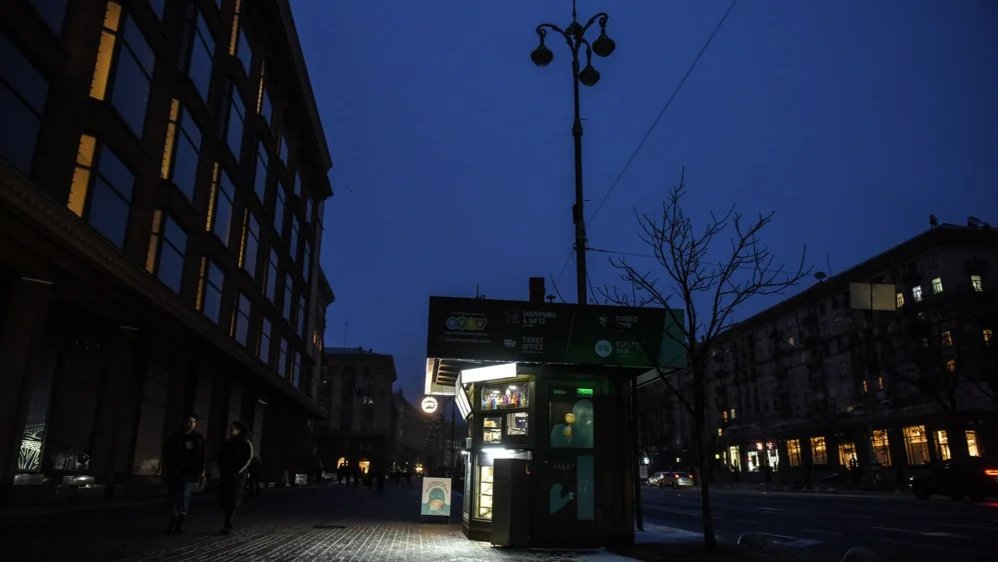
Igor Burakovsky
Ukrainian economist, Head of the Board at the Institute for Economic Research and Policy Consulting
Mr. Burakovsky is a specialist in economic reforms in transitional economies, regional integration processes, and international trade. Igor participated in a number of international research projects and worked as research fellow in the UK (Birmingham University), Japan (Economic Planning Agency, Japan Institute for International Affairs), and the US (Fulbright Scholar, Stanford University). Mr. Burakovsky wrote over 50 research papers and is one of the leading experts with the non-profit monitoring committee of the Ukraine-EU association.
Planning timeframe shrinks
The Soviet motto saying “Everything for the front, everything for the victory!” and the Third Reich’s “Guns instead of butter” were only formally different, as both totalitarian regimes viewed the wartime economy the same way: arms above all. Both managed to get the best of their potential capacities. But Ukraine is neither Hitler’s Germany nor Stalin’s Soviet Union. What does the notion of “wartime footing” mean in a democratic country? How long will the economy endure being this way, and who pays for the whole thing?
When talking about wartime economy, it is important to understand what kind of objectives the country pursues and what capacities it has. The main objective is to survive and win the war, which requires money, manpower, and material resources. In other words, the war has a precise economic cost.
Ukraine’s military economy has two components. The first one is external resources. That includes, first and foremost, Western munitions, military-grade hardware, and technology we receive directly from our partners at NATO and the anti-Russian coalition. This is our rear, so to say. Why is it this way? The reason is that those items are either not produced in Ukraine at all or are produced in insufficient quantity. Since the entire territory of Ukraine is in Russia’s field of fire one way or another, that means we do not have any completely safe location where we could concentrate our military production to supply the front lines with ready-to-use items. Additionally, we lost a part of our productive capacity. Also, we need weapons and ammo right here and now, in large quantities.
The second component of wartime economy is financial aid our partners supply us with. This money is essential for the state to continue functioning at all during the war. The state must, above other things, support its people socially. People must be able to live rather than survive. Money is needed to patch “holes” created by the war, for instance, for repairing energy facilities after missile strikes. Ukraine received a total of $31.2 billion worth of aid in 2022: $14.3 billion in loans and $16.8 billion in subsidies.
Obviously, Ukraine is also spending its own money on the war. However, the “general economy aid” provided by the EU and other donors cannot be spent on the military.
That is a peculiar situation: we’re getting weapons and ammo from the West, but Ukraine has to pay salaries to its servicemen from its own pocket. When the war started, we had almost no rainy-day fund, like the one that Russia has, called the National Wealth Fund. So we had to start with a clean slate.
The situation required us to review our budget, which we did in 2022. The 2023 budget is one of a country that is at war. Our incomes and expenditures will decrease by 14.4% and 15% respectively, comparing to the previous year, and our budget deficit will be 20.6% of our GDP. Out of 2.6 trillion UAH (~€66 billion), 1141.1 billion UAH (€29 billion) will be allocated for national security and defence, and 447.6 billion (€11.36 billion) on social welfare. Plus, a fund with a capacity of 35 billion UAH (€888 million) will be created to recover critical social infrastructure facilities that were damaged by Russia’s military aggression. The overarching goal of Ukraine’s 2023 economic policy is to provide for macroeconomic stability to the extent that is possible right now. And that’s it! Investments and large projects are totally out of the question. Wartime economy means that we have to shrink the planning timeframe.
Take it one day at a time, right?
During the war, our economy is focused on satisfying current needs, say, for today, tomorrow, or the day after tomorrow. It does not look into the future, unfortunately, although it does ensure this future. If we win on the battlefield, the next stage will start, which is large-scale economic recovery. The element of wartime economics is, however, fast-track, or even immediate, recovery. We lose energy facilities because of missile attacks and other things, and we spend some part of our money to keep this energy infrastructure functional. We need roads and transport to move around weapons, keep the economy running, and help our people. Notably, many recovery works are sponsored by private businesses, and not just the state budget.
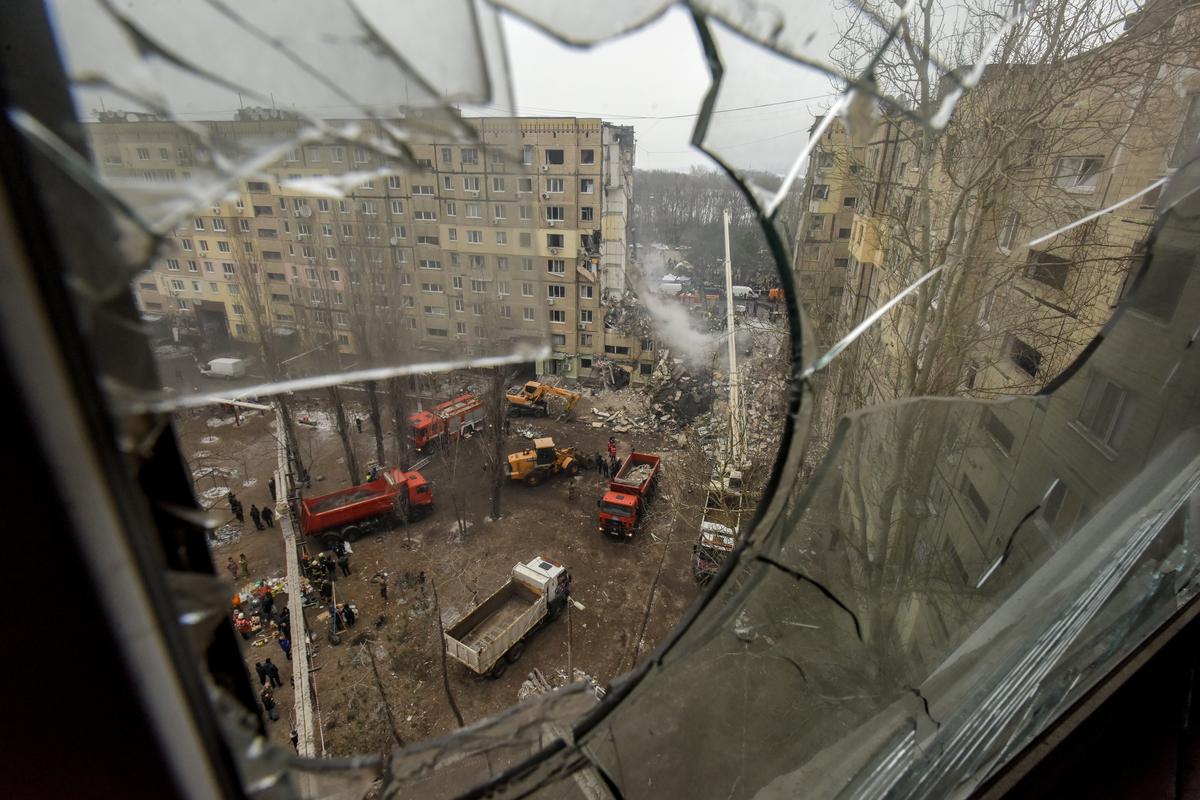
Consequences of a missile strike in Dnipro, 15 January 2023. Photo: EPA-EFE/OLEG PERTASYUK
Business adapts to the war
Today’s Ukraine has a phenomenon that wasn’t a thing during WW2. I call it the folk wartime economy. We’re talking about a colossal amount of money, hundreds of millions of UAH or maybe even more that volunteers collect inside Ukraine and people sympathising with Ukraine are sending from abroad. The Come Back Alive foundation and other charity organisations have reports on how it works. People provide Ukraine with drones, body armour, thermal cameras, vehicles, military equipment, food, medicines, and power generators for civilians. This contribution cannot be overemphasised. Despite Russia’s vain attempts to set up “humanitarian aid” for its military, it does not have, and never had, and never will have this type of nationwide, all-embracing support inside the country.
What else is there? We’re forced to review our exigencies. Investments into Ukraine are in a frozen state, and household incomes are decreasing. But even in the conditions of a wartime economy, there are limits, and we cannot go below those, otherwise the economic system will collapse. This is why the government initially introduced certain tax incentives to support economic activity, and then those had to be dropped as there was not enough money in the budget. At the same time, most of the things our people need are provided to them thanks to the international aid. This aid comes via different channels.
Ukraine needed about $4 to 5 billion each month to keep the country afloat in 2022. As far as I’m concerned, Ukraine’s economy turned out to be much stronger than it was predicted when the war just started.
So, now we need $3 to 4 billion monthly. The IMF believes that Ukraine will need at least $39.5 billion of foreign money in 2023, which is the base-case scenario, and the negative scenario would require up to $57 billion.
What provides for this economic persistency?
Although the hostilities are large-scale, they are not a tornado that wipes everything out of its way. Plus, the strength of institutions like the National Bank, the government, the fiscal and banking systems, helped a lot, and the reforms, in particular, in the banking sector, were also effective. Those made the system healthier. The reforms could not protect us from the war, but they helped us stand our ground. This doesn’t mean we’re fine! Our economy has largely shrunk. We are suffering colossal losses in terms of GDP: we believe it has already decreased by 30%. Front-line and occupied areas were subject to a human-caused humanitarian disaster.
But despite all this, there is no economic disaster here like the one you would see in an apocalypse movie: it’s not like the whole place is in ruins, people lurk here and there seeking anything to eat, no money is used because there is nothing to buy, no transport running, people build fires in cities to warm themselves, and mass epidemics wipe out the survivors...
Support independent journalism
In addition to the material factors of economic stability, it is important to mention one thing that remains underestimated: the consolidation of Ukrainians. You cannot demand that 99.9% of your society be self-sacrificing patriots. But the real patriots, activists, and simply caring citizens have been able not only to get their act together, but also to attract a large number of other people who are not leaders in our understanding, but contribute to the mutual victory. And this is highly important. Yes, many people lost their businesses. But a part of them managed to quickly get back up and running, and some didn’t even fold. Our Institute has found out that businesses are somehow adapting to the war, although it is clear that hostilities on Ukrainian territory and constant missile and artillery attacks create a high level of uncertainty for business planning.
An important feature and at the same time a consequence of the war is large internal migration, mainly to the western regions, and external migration to neighbouring countries. People would either simply flee the war (and this, of course, was the loss of labour force) or somehow relocate themselves and their businesses to safer countries. The fate of entrepreneurs who had to flee twice is especially dramatic. They did so for the first time in 2014 after Crimea and partly the regions of Donetsk and Luhansk were occupied, and for the second time now, when the occupation contaminated areas further into our territory. However, regions that welcomed new refugees also got new potential opportunities. Well, again, it would have been very difficult for Ukraine, almost impossible, to survive without large-scale economic and military assistance from our allies.
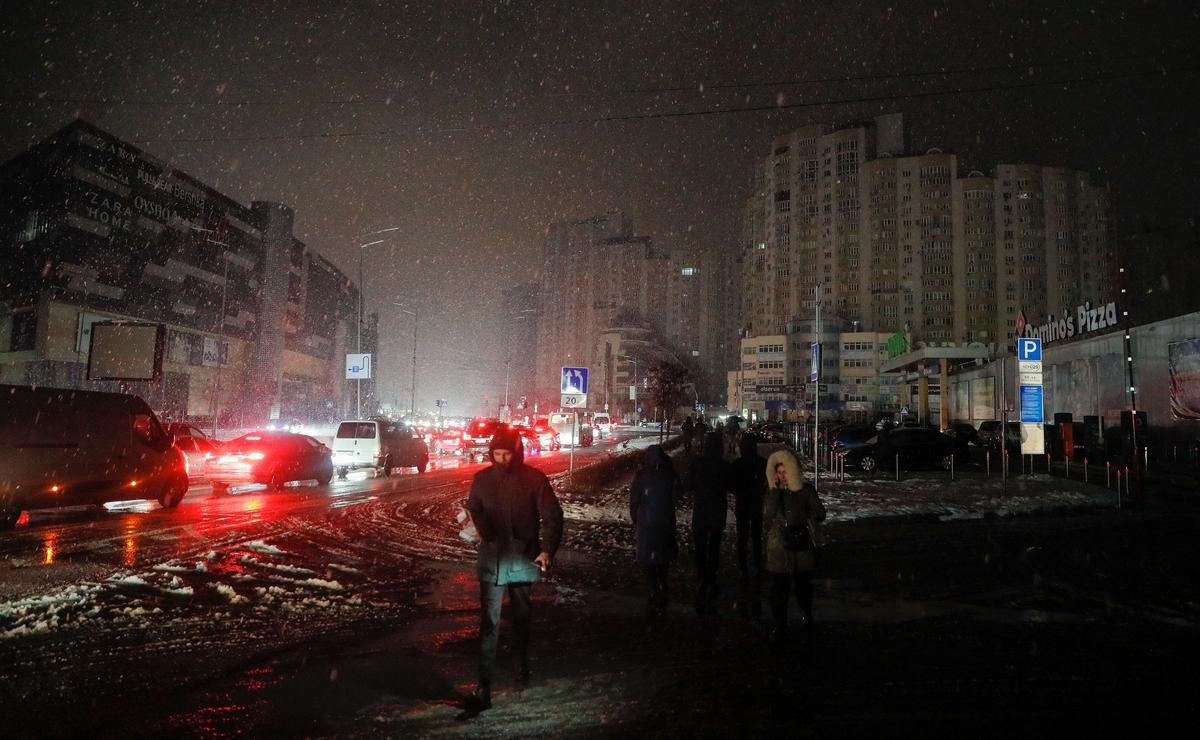
A street in Kyiv after a blackout, 16 December 2022. Photo: EPA-EFE/SERGEY DOLZHENKO
Security as a commodity
Igor, let me return to my frivolous wording. I now understand who’s paying for the wartime footing. It scares me to ask you how long can Ukraine hold out for…
I would only be able to answer your question if I knew precisely how long the hostilities are going to last, and what the outcome is going to be. I’m not a military expert and not a predictor, let’s put it this way: I’m not even [Oleksiy] Arestovych [We both laugh]. There are three options overall. The first one is the complete rout over the Russian Federation. You may call it “Ukrainian tanks in Moscow’s Red Square”. This would allow us to switch from wartime economy to restoration economy. Russia would pay war reparations, international legal mechanics would ensure that the aggressor is punished, and the routed Russia would no longer be a menace to us and the world after its regime is changed.
The second option: the conflict becomes frozen in the condition that it is now. That is, a no-go situation. In this case, the Ukrainian wartime economy, which I described earlier, would exist, on the one hand, as long as our allies keep helping us, and on the other, until there is certainty in the military and political sense. This would be a horrible option for Ukraine. All-out effort, and many new victims.
The third option is: we liberate all our territories and get back to the 1991 borders. Crimea would be a major issue here, but we wish to solve this issue once and for all. This way we would be recovering our country strategically, rebuilding the wiped-out cities like Mariupol. But in this case, the development of defence industry at large, as well as strengthening and developing our military, would be one of the components of this recovery. Under otherwise equal conditions, the preservation of the current Russian regime, albeit a modified one, would always remain a menace to Ukraine.
By the way, having a strong defence industry does not mean we would be producing everything on our own. We would manufacture some things ourselves, produce some other things together with our partners, and buy the rest. Certainly, expenditures on defence industry would grow in this case.
Are there any examples of countries that used defence industry to manage its entire economy?
Let’s take the Soviet Union as an example here. The Soviet Union would drag this defence industry and eventually overstrained itself. A similar thing is happening to North Korea. They have relative success in weapons production, but no happiness at the end of the day. Iran produces its Shaheds [kamikaze drones] but remains a poor country. We can see that this is a dead-end path.
The defence industry, just like anything related to the military, has two sides. Weapons production creates jobs, more taxes to the state budget, and a certain level of technological development, additionally, many goods are dual-use ones. Electronics may be used to produce both phones and heat cameras, for instance. Those are based on the same elements. A tank has a clear purpose: it can only be used to destroy enemies, and that’s all it can do. If I produce apples and butter instead, though, I will eat those and restore my energy, live, and move forward. This is why defence industry is money, taxes, and technological development in the short-term perspective, but a decrease in consumption in medium-term horizon.
So, here’s the question: what must the state ensure? The answer is: adequate living conditions and certain laws. Those are called public goods in economic terms.
That is, things that all citizens use. A good example of this is a traffic light. Whether I pay taxes or not, I use traffic lights anyway to move around safely. Just about the same thing pertains to security: the state must provide security to its citizens. There is an agreement between the state and the society: people pay taxes, and some part of their taxes comes back to them not through schools, welfare, etc, but through a specific commodity called security. Namely, personal security and security of businesses.
This is why both internal and external security is always assessed by internal and external investors. It is understandable that a country that has issues with its neighbours is treated cautiously, other conditions being equal. Business loves peace.
I believe almost 100% of Ukrainian citizens would not just mind but actively support the idea to have a large part of their taxes to be spent on security in every sense now.
There are things like the Pythagorean theorem that work under any conditions, be it under an authoritarian rule or democracy. The question is: what things should be implemented, and how this needs to be done? Ukraine is facing several goals now. It needs to fight the war against the aggressor. It needs to help its people, because without the people there is no defence, no economy, nothing at all. It needs to repair the destroyed things, and so on. This creates the issue of how the state policy should sort out its priorities when there is not enough money in the budget. In this setting, society reacts specifically fiercely to corruption, I mean, of course, the recent scandal at the Defence Ministry. Society demands, and is 100% right about it: tell us, how much money you received and how you spent it? This is vitally important. Otherwise, the trust, which is the factor of development borne by the human capital, is lost. If we do not trust our state, it cannot perform its functions and provide us with security, among other things.
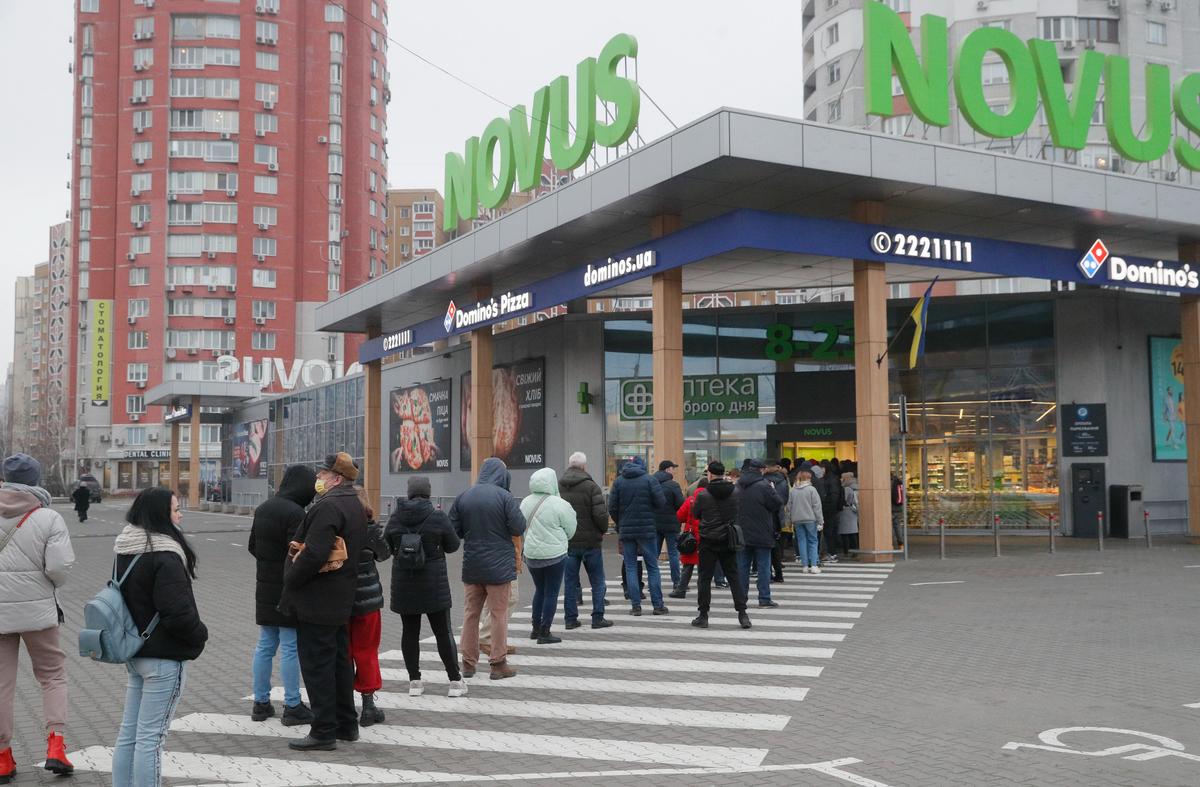
People queuing in front of a grocery store in Kyiv, 24 February 2022. Photo: EPA-EFE/SERGEY DOLZHENKO
‘Certain things will only be revealed to us once the war is over’
Here’s an assumed ratio I found: to suffice the need of one serviceman, a total of about 12 civilians must be working in the rear. That includes equipment maintenance, transportation and supplies of food, uniform production, and so on. Does this proportion actually work in Ukraine? A significant part of the working population left the country, passionate and active people signed up for the army as volunteers. Those who had stayed are hardly only employed in the sector that provides for the military.
Unfortunately, many things, such as our casualties, total costs, and the proportion of foreign and domestic expenditures will be only revealed to us once the war is over when we calculate everything. Our Institute is thinking of doing such work, by the way. For instance, how much did volunteers bring in? How much money have Ukrainian people donated for the army’s needs? I mean, at least approximately. Is it hundreds of millions, hundreds of billions, or maybe even trillions of UAH?
It’s also interesting what kind of proportion there is between donations and Western monetary aid: who gave Ukraine more?
The Finance Ministry publishes some fascinating data from time to time on who sponsors our budget expenditures currently, by country and continent. Another phenomenon that needs explanation, namely the sector of wartime folk economy, should also be added here.
Now let’s get down to your question. Take two enterprises: a factory that produces tanks and a tailor’s shop that produces clothing, including clothes for tank crewmen. A military order for them is both work and development. In the most general terms: today, the production of any item is a chain of businesses of different sizes, and together they eventually provide the final product. When they restructured and reduced their military in the US, there was a lot of debate. Closing a military base would shut down an entire complex of auxiliary businesses that helped it perform its functions. Senators would say: “If you shut down the military base, 1,500 or 2,000 people will lose their job.” There’s a movie called G.I. Jane which shows exactly this type of thing.
I don’t know how many people there are in production chains, working for Ukraine’s defence industry. But I can tell you one thing: there used to be analysis research of all economic parameters in all production chains nationwide some time ago, including how many jobs they create.
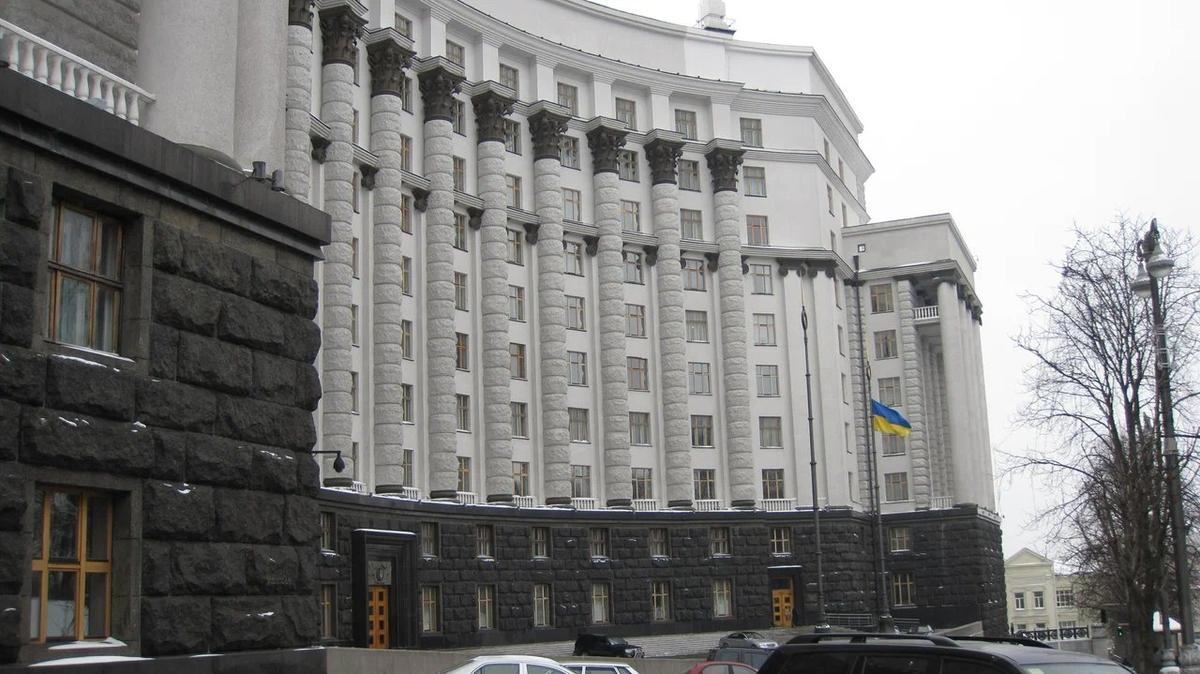
Ukraine’s Ministry of Finance. Photo: Wikimedia Commons, CC BY-SA 3.
‘We need everything, and we need it now’
You mentioned a potential factory producing tanks earlier. The Malyshev Factory in Kharkiv, a tank producer, suffered heavily from missile attacks... The question is: why cannot we open joint ventures manufacturing both military and civilian produce in Poland or the Baltic States, countries that have proven their strategic partnership with Ukraine both with word and deed? Refugees who moved there will become employed. Ukrainian men who are not on the front lines will be able to go there, join their families, and contribute to our defence. This would be part of wartime economy, right?
Everything that is inside our country is part of Ukraine’s wartime economy, along with the things that we get from abroad to successfully fight the occupants inside our territory. Your suggestion is an option of how labour migration might use patriotic mottos. “I did not simply leave, I left so as to help my homeland!”
A factory there wouldn’t be destroyed by bombs. Also, the produce of such a joint venture would help our country. And employ people, too...
Well, when things are created, the first question economists from the finance ministry ask is “Where are the taxes going to be paid?”
I get it. In Poland and the Baltic countries.
Such co-operation is possible under certain circumstances. However, there are zero corporations in the West today that produce weapons or similar complex things that started doing so from clean slate. This isn’t how it works; you can’t just bring metal bars to a factory and expect a tank with electronics inside on the way out. There is a complex network of cooperation ties that makes things work. Technology, heat cameras, electronics, wires, and all sorts of stuff are being ordered from different places.
We have a problem with labour migration here. Let’s say we receive joint-produced tanks from Poland. The refugees are employed and are being paid well, but they pay their taxes in Poland. Their families also live there, meaning that they spend this money outside Ukraine, too.
Now here’s the question that has nothing to do with economics: how do we get the money from things produced abroad by our citizens that we “exported” of pure necessity? This is a major issue. Now let us talk economics, and not military.
There’s something we need to understand: some Ukrainians are planning on going back to Ukraine once the war is over, and others have no intention to do so. Thus, the most important thing isn’t having or not having joint ventures abroad. The issue with Ukraine’s wartime economy is that, as I said before, we need everything, and we need it now. We cannot wait another ten years for the first factories of this kind to start producing three Leopard tanks each. We need tanks now as Putin wants to repeat his breakthrough on the war’s anniversary.
Our allies thought this war would become a slow-going one before long. But the war is being fought at an active pace, and the allies have found out that their storages are also running dry. Small countries virtually share their last weapons with us. This is why any co-operational development pattern in defence industry can only be considered in mid-term perspective. In the short-term perspective, we’re doing everything we can. This may not necessarily be high-tech produce. We have good factories that produce military uniform or armour plates. Clothing, medicines, gasoline in colossal volumes is what the military needs right now.
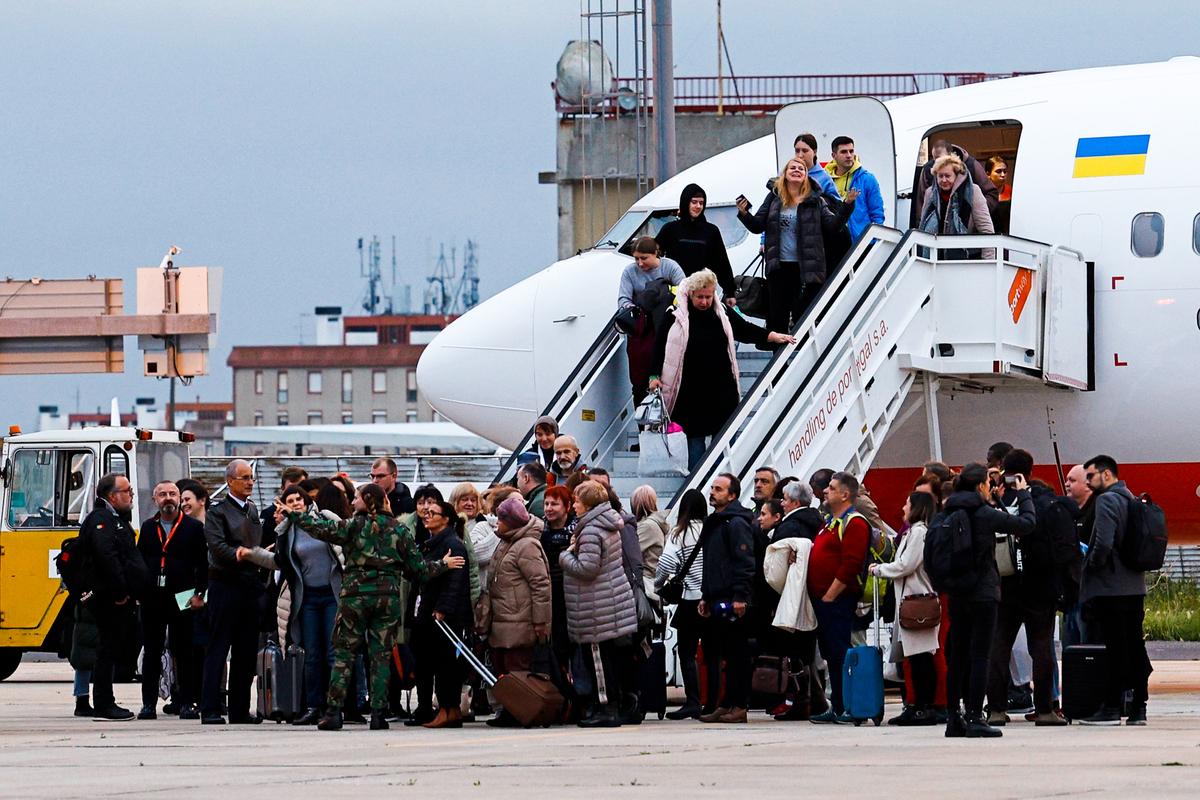
A group of 170 Ukrainian refugees exiting an aeroplane after a flight from Moldova. Figo Maduro military aerodrome, Lisbon, Portugal, 22 December 2022. Photo: EPA-EFE/ANTONIO PEDRO SANTOS
‘If we reach rock bottom, we might start confiscating piggybanks’
I’m sorry, I’ll have to ask you one hyped-up question. American consumers were not able to purchase new vehicles between 1943 and 1945: the war required them to limit their appetites as the US was part of the anti-Hitler coalition, and the budget expenditures were too high. This isn’t the case of Ukraine so far, as I understand. Do you think it is going to get stricter? And a more general question: will articles of luxury, costly real estate, and foreign currency piggybanks ever be confiscated to nurture the defence industry, will the unpopular oligarchs have to give up their money?
I would speak about economical, moral, and political imperatives here. During the time of war, all efforts and resources need to be focused on fighting the enemy. At the same time, the state cannot give up many of the social obligations that it has. We still need to help people with special needs. We cannot stop financing schools or repairing destroyed hospitals. Under some conditions, an introduction of mobilisation economy may be discussed. But such economical mobilisation may not be selective and will be applied to everyone.
Speaking of oligarchs and luxury... Wartime economy requires certain redistributive relationships. But let us go back from wartime economy to martial law and its components. We have mobilisation, haven’t we? Yes, we do. Are properties of companies, like vehicles that might help the military, being confiscated? They are not. Let us recall the years of 2014–2015 when the Russian aggression started in Crimea and eastern Ukraine. Businesses were afraid of nationalisation back then, but nothing happened. Do we have restrictions on foreign currency operations? Yes, we do. However, I still may go to a bank and buy as many dollars as I have UAH for exchange. Do we have restrictions on transferring money abroad? We do, but those are not overwhelming restrictions.
There are so many off-road vehicles in the streets of Kyiv while volunteers are forced to collect money to buy jeeps for the military...
We may force jeep owners to switch to using underground. But this can only be done by an arbitrary decision. Frankly speaking, I’m not sure that we should walk around and confiscate everything. If people buy cars transparently, paying all the necessary taxes, it’s fine, as they still do contribute to the state budget. But if they use certain schemes to do so, they should be punished, but not because they are buying expensive stuff, but because they are marauders. Theoretically, if we reach rock bottom, we might start confiscating piggybanks. This would be the same situation as when Ukraine declares 100% mobilisation. If this happens, not only cars and jewels will be confiscated... This isn’t the case so far, and it’s good news.
As for the oligarchs, it’s a dubious situation. Today we have zero officially registered “business sharks” in our country. The law prescribes that a registry of such “sharks” needs to be created,
and a tender was held to set it up. But this is more like a chart where people are being assessed by meeting or not meeting certain criteria. Assets have devalued greatly. Take Rinat Akhmetov for instance, he lost so much in Mariupol! One of the criteria that Ukrainian law uses to define an oligarch is possession of media assets. [Former Ukrainian president Petro] Poroshenko transferred his TV channel to its employees, many others simply withdrew their “mouthpieces”, Akhmetov folded his media business. As of today, about 80 individuals in Ukraine meet at least 1 criterion to be qualified as oligarchs, according to Oleksiy Danilov, the secretary of the National Security and Defence Council. So, we’re technically stuck here.
Let us not forget that Ukrainian oligarchs, with few exceptions, actively contribute to our country’s defence. Poroshenko buys a wide variety of equipment for the military and provides humanitarian aid to those in need, Akhmetov has established a licensed production of armour plates for body armour, and his enterprises produce high-quality welded shelters for soldiers, supplied to the Armed Forces of Ukraine free of charge. That is returning to our discussion about wartime economy. The important thing is that the oligarchs have had their say: Russia is the enemy. We do not like rich people as they personify evil to us. But large companies and monopolies are also parts of Ukraine’s economy! This is the dualism, and appreciation does not make any difference here; they are national manufacturers, same as everyone else. As economic agents, they have their right to impose demands and lobby for their interests in a civilised way. Political corruption, however, needs to be combated instantly and fiercely.
In Russia, defence industry is working round the clock, and new waves of mobilisation come rolling in. They use propaganda to get people used to the idea that the war is going to take a long time, and life will remain tough while Ukraine exists at all. Ukraine, however, is not using most of the martial law measures. Is this an experiment on what strategy will overcome, a totalitarian or a democratic one?
Each country has its own certain resource, history, and a place on the map. Yes, Ukraine and Russia have completely different potentials, that is why we cannot rely on our external solutions only. There are two basic models of management: the first one is a vertical and centralised one, which goes from top to bottom. This is how the Soviet economy worked and what Russia aspires after. But there is also a network model that relies on horizontal ties, and Ukraine is close to having such a model. If the top of the centralised model is chopped off, the system is doomed. A network will remain, though, even if some of its cells are torn. However, assessing economical politics in wartime conditions is a topic for a separate discussion.
Join us in rebuilding Novaya Gazeta Europe
The Russian government has banned independent media. We were forced to leave our country in order to keep doing our job, telling our readers about what is going on Russia, Ukraine and Europe.
We will continue fighting against warfare and dictatorship. We believe that freedom of speech is the most efficient antidote against tyranny. Support us financially to help us fight for peace and freedom.
By clicking the Support button, you agree to the processing of your personal data.
To cancel a regular donation, please write to [email protected]
